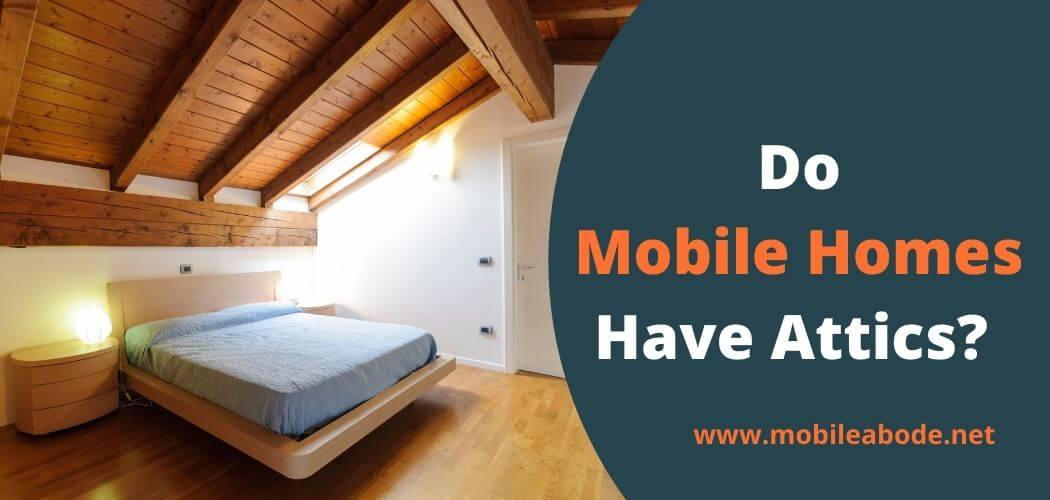Yes, mobile homes have attics. Mobile homes are built on a metal chassis that is permanently attached to the trailer’s outer shell.
The chassis provides a strong foundation for the home and protects homeowners from exposure to the elements when they aren’t staying in their home.
In addition to structural support, the chassis provides room underneath for ductwork and wiring as well as plumbing pipes and vents.
An attic is a space with sloping walls where you can walk around comfortably under roofed or semi-roofed construction such as a mobile or manufactured home.
Attics contain insulation that traps air between ceiling joists that become warmer during high heat months. They also provide ventilation during the winter months when your warm breath makes its way into the attic through vents.
In the center of the roof above the attic is a vent that allows hot air from inside your mobile or manufactured home to escape.
The vent also provides a way for smoke and fumes from a fireplace, dryer vents and bathrooms to get out of your home in case of fire.
Asbestos shingles can be found on most old mobile homes. Because asbestos was used extensively in buildings during WWII & through the 60s it’s not uncommon to find asbestos shingles on older units.
You may see them on some newer homes as well because many people prefer the look over newer more modern roofs with asphalt shingles or metal panels that look like asphalt shingles.
Related Article: What Is The Best Roof For A Mobile Home?
Do mobile homes need roof vents?
Yes, mobile homes need roof vents. Since mobile and manufactured homes are built on a metal chassis that’s attached to the home you can’t just open up your windows or install curtains to allow fresh air inside.
This is why most mobile and manufactured homes come with roof vents as well as one or more intake vents for each room.
Mobile homes also use their ductwork system so they require both an intake vent and an exhaust fan. Without these two ventilation systems, it would be impossible for homeowners to live comfortably in their units.
If you’re interested in installing central air conditioning in your unit you can contact a service tech about upgrading your cooling system to one that doesn’t rely on outside air for ventilation purposes.
How do you know if your attic has enough ventilation?
In addition to roof vents, mobile and manufactured homes also have intake vents that provide fresh air from outside. Intake vents should be placed along the side of your home as well as any other outside wall so you can get natural ventilation inside your unit.
If a room has an exhaust fan then it should have a separate intake vent near another wall or windows that can be opened for cross-ventilation.
There are passive ways to maintain a steady flow of fresh air through your attic via open windows and solid sliding doors, but the heat will still build up if there is no place for the hot air to escape.
With proper ventilation in place, homeowners rarely need fans since hot air naturally rises towards the top of an enclosed space such as your mobile or manufactured home to escape through the roof vents.
Do mobile homes have floor joists?
Of course they do. The weight-bearing members of the home are called “floor framing” and your mobile home will be no different than any other type of permanent structure in this respect.
Floor framing, which is generally 2×8’s or larger on 16-inch centers, provides support for the subfloor of the mobile home, as well as insulation where it overlaps the subfloor.
Also Read: How Far Apart Are Floor Joists In A Mobile Home?
On most parks that rent mobile homes to people, you’ll find that there is a one-foot gap between the edge of the subfloor and the park model trailer siding all around.
This serves two functions: It gives additional insulation value by allowing air to circulate beneath the mobile home, and it protects against dust and dirt from accumulating beneath the mobile home.
There are very few manufactured homes or park model trailers that have a full basement under them, but in some cases, you’ll find that they have a crawl space under them instead of a full basement.

